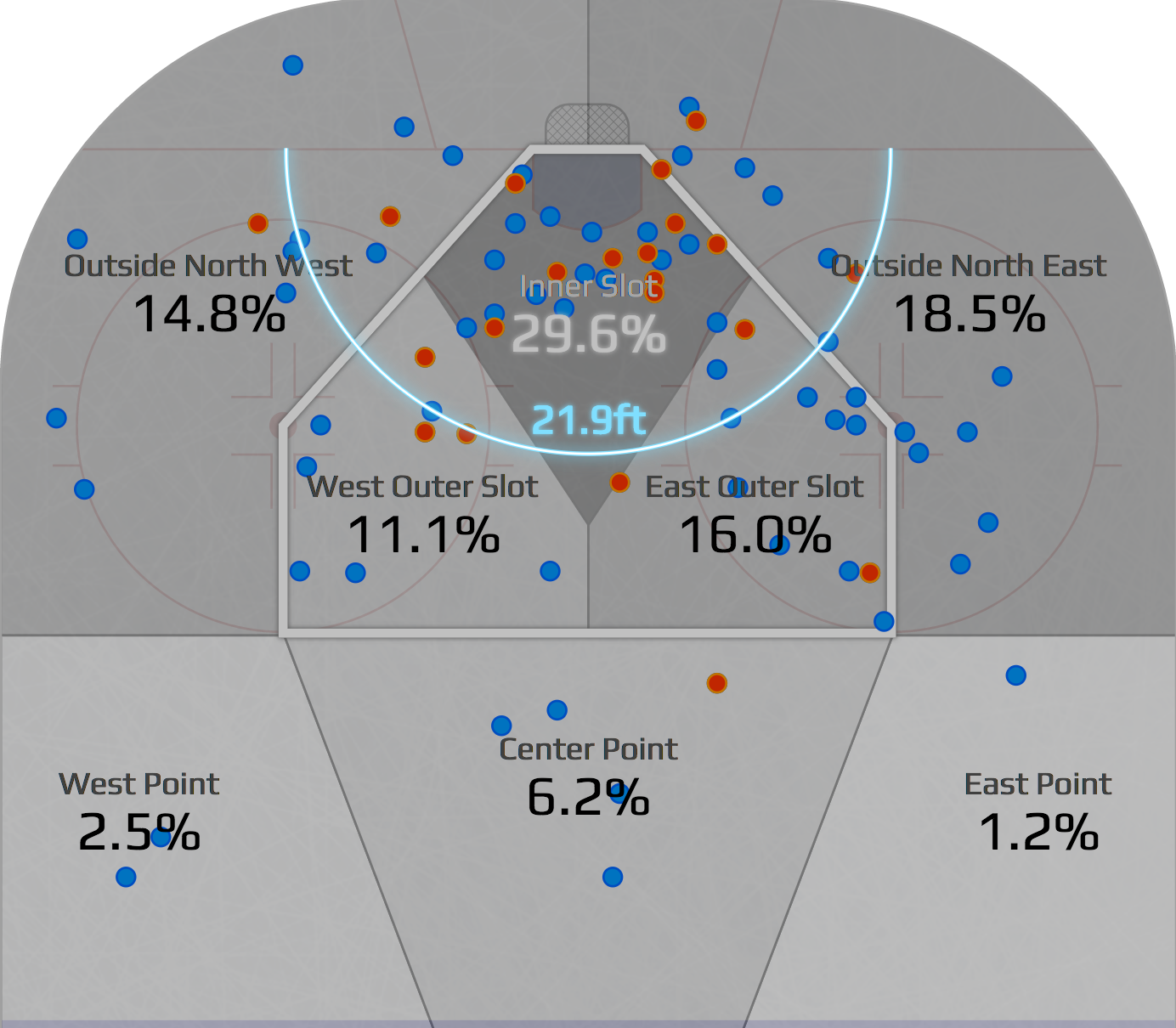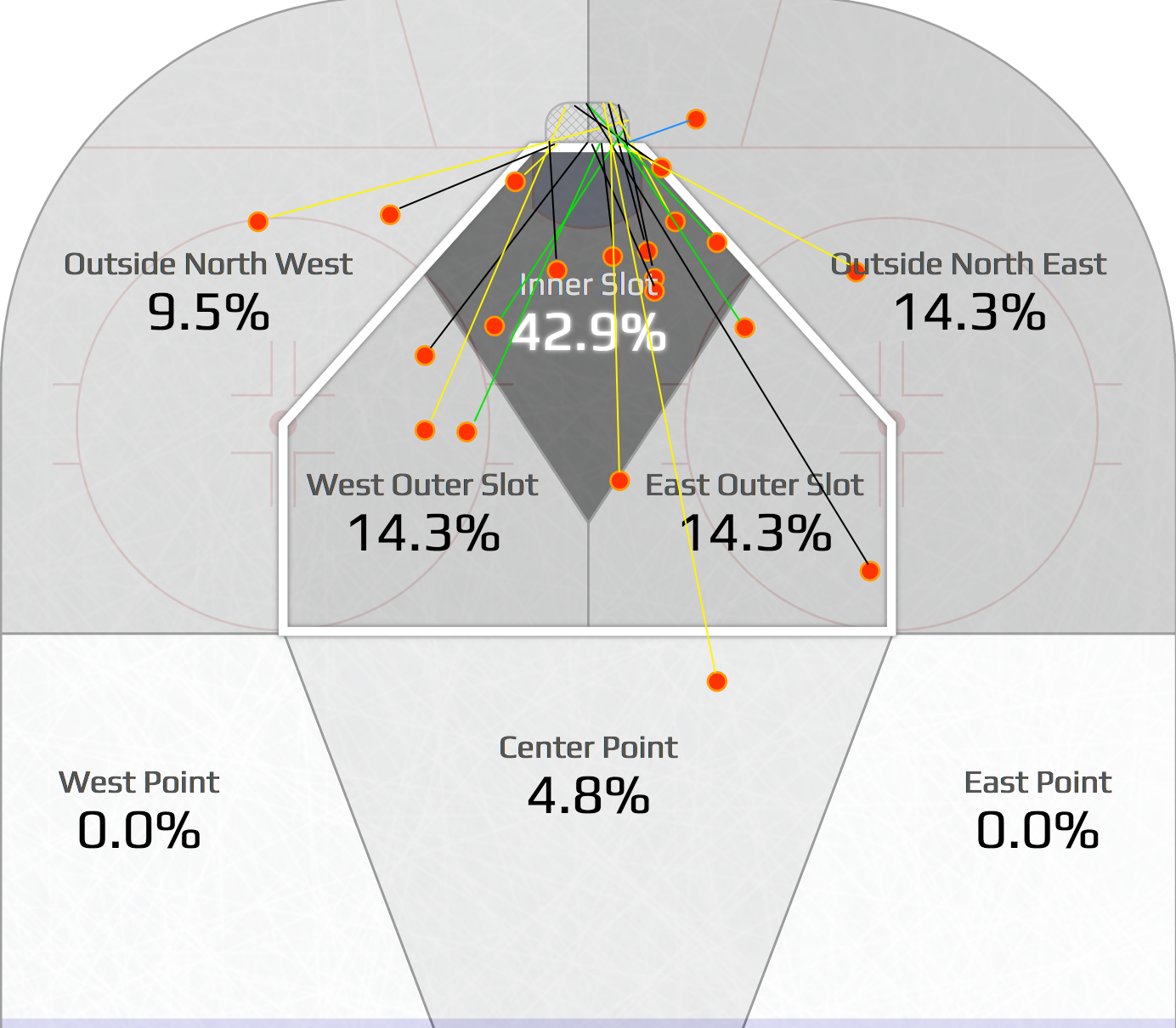Sidney Crosby’s 21 goals in 24 games have been the talk of the NHL so far this season, but his torrid goal-scoring pace isn’t exactly a new development. Since the calendar turned to 2016, Crosby has scored 48 goals in 68 regular season games, more than any other player, and scored on 21.8% of his shots on goal.
This season has been even more impressive than that averaged out performance though, and because Crosby is not a normal hockey player, the question of sustainability is a bit tougher to answer.
For example, since 2007, Sidney Crosby has an on-ice shooting percentage of 10.5% at 5-vs-5, in an era where the norm is closer to 7.8%. That means even without accounting for the extra shots, Crosby being on the ice boosts his team’s ability to score goals by almost 35%. .
Most of that boost is due to Crosby’s playmaking ability, but when he decides he wants to be a goal scorer instead, he’s nearly unstoppable.
On top of Crosby’s above average finishing ability, he has taken his shot selection to new levels this season, with 19% of his shot attempts coming from the inner slot, and 55.1% of his shot attempts coming from the slot as a whole. The average NHL forward takes just 13% of their shot attempts from the inner slot, and 48% from the slot as a whole.
When you parse things down to shots on goal alone, it gets even more extreme.

Blue dots are saved shots, red ones are goals, and the light blue line is Crosby’s median shot distance. Based on shot locations alone, Crosby’s expected shooting percentage so far this season would be 12.12%, but he is also a far above average finisher with his 14.8% career shooting percentage, which is 5.7% better than the NHL’s average of 9.1% during his career. That 5.7% makes Crosby a career +62.6% better shooter than the average NHL player. Using the same inflation rate, Crosby’s personal expected shooting percentage so far this season is 19.72%.
That’s still a ways below his current 26.9% rate this year, but approaches his career high from 2010-11, meaning that a large part of his production could be sustainable.
It’s also worth noting that the calculations we’re using are imperfect, using large zones that, while accurate for league-wide goalscoring trends, miss some of the detail in a single player’s shot locations. For example, look how tight Crosby’s goals outside the inner slot are to the inner slot; he’s not scoring lucky shots from the boards, and even his lucky goals, like the one from behind the goal line, are skill plays rather than bounces. On average, Crosby is scoring from just 14.4 feet away from the net
Let’s got into even more detail on Crosby’s goals combining graphics with some video scouting.

There’s a lot of information on this graphic, so I want to explain it a little. If a line goes to the goal line, the goal went into the bottom half of the net. If it goes to the back of the net, the goal went into the top half of the net. Yellow lines are wrist shots, black lines are deflections or tap ins, green lines are slap shots or snap shots, and the blue line is a backhand.
Crosby is an extremely unpredictable shooter, dangerous from both sides of the ice, and while he hasn’t scored on a ton of them this season, he has the league’s most dangerous backhand shot.
One thing that sticks out to me about Crosby’s goal scoring this season is that eight of his 21 goals are either deflections or tap ins, the kinds of shots that have the highest expectations of beating goaltenders.
There is an element of luck to deflections, and so far this season Crosby has been able to get a remarkable 70% of his deflections on net, whereas league average is 47.5%. Is that luck or skill? It’s tough to say.
The fact is, if Crosby is able to continue this exact kind of shot generation for the remainder of the season, I wouldn’t be at all surprised if he re-wrote the shooting percentage record books for the post-lockout era, but sustainable scoring isn’t just about shooting percentage.
The kinds of shots Crosby is getting are of remarkable quality, but it’s unlikely that he or any player, could sustain that level of quality over a full season. That doesn’t necessarily mean he’s due for an epic goal drought, but he probably isn’t going to score 50 in 50, or hit 70 goals on the season.
There is a tendency for people to see unsustainable goal-scoring runs as unearned, and in some cases that’s true, but this one is full value from what I can tell. However, even the best process couldn’t keep this result going forever. That doesn’t mean Crosby is due for a goal drought, but 50 goals this season might be the mark to look for.







